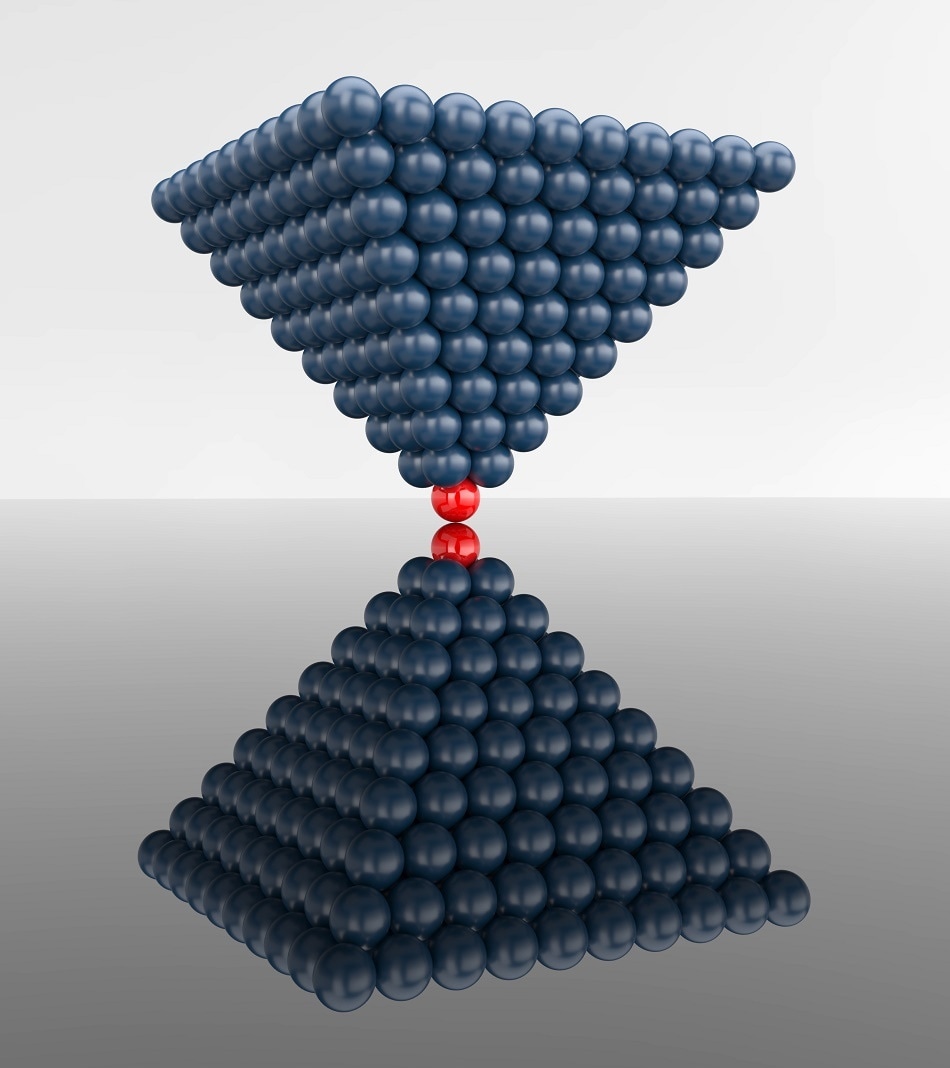
Image Credits: g/m63085/shutterstock.com
In the world of nanoparticle fabrication and manufacturing there are two main methods—bottom up methods which start with nothing and build up atom by atom, and top-down methods which take larger bulk materials and make them smaller and smaller until they are in the nanoparticle size range (which by most regional standards is less than 100 nm but some countries accept less than 1000 nm). These methods are applicable for both small scale fabrication and large-scale manufacturing, and in this article, we will look at both general method areas that are used to create nanoparticles.
Depending on your definition of nanoparticles (and nanomaterials in general), the size range where nanoparticles are created does vary. However, the definition given by the European Commission is one that is used in many places of the world and defines nanoparticles which are between 1 and 100 nm is size, where at least 50% of the nanoparticles in a given nanoparticle system/product need to fall into this range. Naturally, there is often some variation in the dispersion of nanoparticles, but this definition gives some flexibility when they are being made, which is good in many ways as some methods as not a controllable as others. Below, we look at the methods which can be used to manufacture nanoparticles but give a general overview of each of the general classes rather than each specific method.
Top-Down Methods
Top down methods involve taking a larger bulk material and breaking it up, shearing it, cleaving it and using a significant amount of mechanical, thermal or chemical energy to transform the material into particles in the nanoscale range. In many cases, these methods can be used to create a much higher volume of nanoparticles—and are often used for mass manufacturing—but are often a lot more uncontrollable than bottom-up methods due to the energy or chemical input involved. This can lead to a nanoparticle suspension with a lot higher polydispersity index (i.e. a broader range of nanoparticle sizes) than if the nanoparticles were built from the bottom-up. But it is often a much more scalable class of methods.
There are many different methods that fall under the top-down category. Some are more advanced than others. On the more advanced methodology side, are various lithographic and etching techniques that can not only be used to remove material (sometimes with the help of a resist mask), but they can also be used to pattern nanoparticles (and other nanoscale materials) to obtain a specific surface. Examples of these methods include photolithography, nanoimprint lithography (NIL), electron beam lithography (EBL), reactive ion etching (RIE) and deep reactive ion etching (DRIE); but there are other lesser-used methods as well.
On the lesser technologically advanced and more physical side of methods, there are various methods which will break up the material using mechanical energy, sunlight, harsh chemicals or high degrees of heat. Grinding, shearing and ball milling are common physical methods to grind up bulk materials into nanoparticles. One of the more versatile methods is exfoliation, but this is a method for bulk materials that possess distinct layers that can be cleaved and separated (such as graphite) and either thermal energy, acidic chemicals, solar irradiation or a mechanical energy input can be used to separate the layers from the bulk structure.
Bottom-Up Methods
Bottom-up methods are methods which build up the atomic structure from scratch by depositing atoms under certain conditions to build a desired structure. These are often self-assembly methods. Because the growth often forms periodically, and certain crystal networks are formed as a result, many of these methods are often termed nucleation-growth methods—which stems from the initial formation of an ‘atomic nucleus’ from which the rest of the structure grows from. Whilst there are bottom-up methods which are used to produce nanoparticles commercially, the output is often much lower than top-down methods and is often used for either specific applications or for providing a tailored solution to a problem. Even though the volume is not as high, the controllability in the processes is usually much higher than top-down methods, which leads to high-quality monodisperse nanoparticle products/systems.
Three of the most common bottom-up methods are chemical vapor deposition (CVD), physical vapor deposition (PVD) and atomic layer deposition (ALD). There are also various other chemical synthetic methods, such as plasma-assisted synthesis, precipitation, epitaxial growth methods, aerosol processes, as well as sol-gel, pyrolysis, emulsification, condensation, oligomerisation, Ostwald ripening and hydrothermal methods that can be used to create nanoparticles from the bottom up.
Sources and Further Reading:
Disclaimer: The views expressed here are those of the author expressed in their private capacity and do not necessarily represent the views of AZoM.com Limited T/A AZoNetwork the owner and operator of this website. This disclaimer forms part of the Terms and conditions of use of this website.